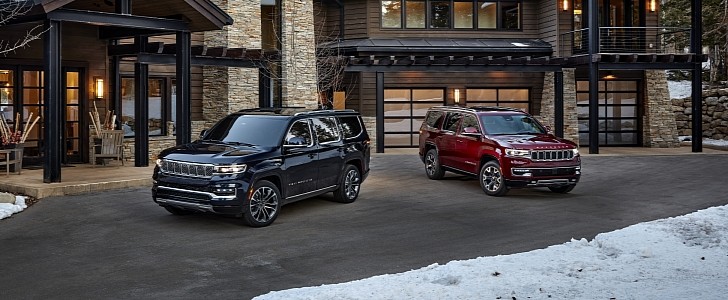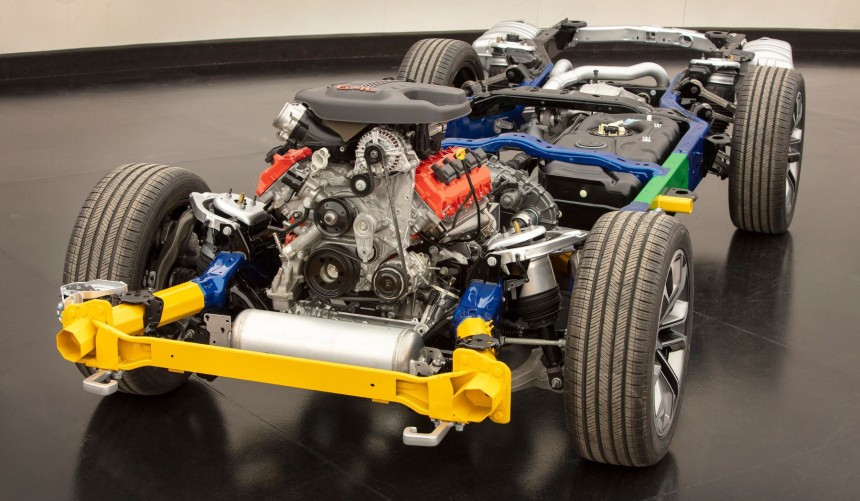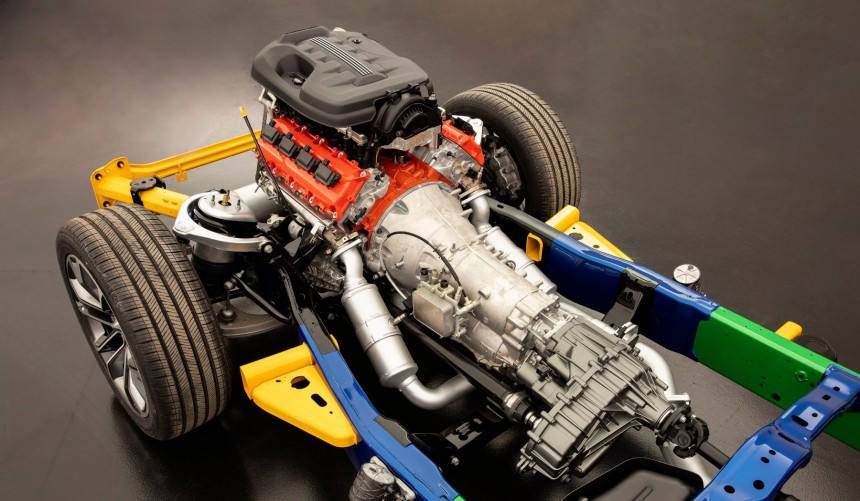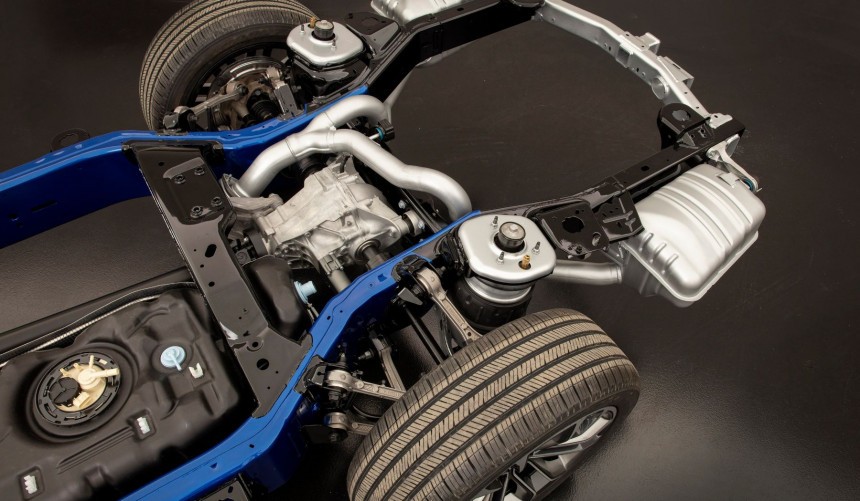With the recently revealed Wagoneer and Grand Wagoneer, Jeep has revived the iconic nameplate as a standalone sub-brand. Built on Ram’s DT frame, these models promise to take body-on-frame construction to the next level, thanks to the multitude of enhancements and state-of-the-art materials they utilize.
Before showcasing the new Wagoneers, Jeep revealed the all-new Grand Cherokee L, the company’s first three-row SUV wearing the Grand Cherokee badge. It ditches the old Mercedes-sourced platform for a newer version initially developed by fellow Stellantis manufacturer Alfa Romeo for its Giulia and Stelvio models.
Since the Italian automaker’s vehicles are renowned for how good they handle, this lightweight Giorgio architecture should greatly improve the new Grand Cherokee's driving dynamics.
Considering both the Wagoneer and Grand Wagoneer are aesthetically similar to Jeep’s mid-size SUV and their wheelbase is less than two inches (5 cm) longer, you would think they share the same Italian-designed underpinnings, at least to some extent.
Yet both Wagoneer models are built on an improved version of the American-made DT platform, which debuted on the fifth-generation Ram half-ton trucks in 2018.
It means that, unlike the Grand Cherokee, the full-size SUVs employ body-on-frame construction. They may look very similar on the outside and employ similar technologies like the three 4x4 systems and Quadra-Lift air suspension, but their backbones are completely different.
Compared to unibody chassis, this construction method has some inherent disadvantages like added weight, less-precise maneuverability, or reduced safety due to the lack of distinct crumple zones.
However, Jeep states that the platform was heavily revised to bolster performance, safety, reliability and reduce overall weight.
In large part, the frame is made from high-strength low-alloy steel. In addition, to reduce weight and obtain a strong and well-balanced structure, engineers used high-strength aluminum closures for the body, including the hood, doors, and liftgate.
That is something we find on Ram trucks which also use aluminum hoods, tailgates, engine mounts, and lower control arms to reduce weight without compromising durability.
To improve safety, both SUVs feature frame-mounted high-strength steel tire blockers mounted behind the front tires to force the wheels outward in the event of an impact.
Moreover, the frame utilizes tall, fully-boxed rails and cross members, double welded to both the inside and outside of the frame for improved durability and roll stiffness.
Such premium vehicles have to provide better driving dynamics than trucks, and to do that, the Wagoneer and Grand Wagoneer are fitted with fully independent suspension systems.
On the front axle, the double-wishbone configuration combines lightweight composite upper control arms with aluminum lower control arms. According to Jeep, their geometry is finely tuned for responsive handling.
Like the latest Ram trucks, the two SUVs use a multi-link, coil-spring suspension setup at the rear, which provides better articulation and thus a smoother ride.
As standard, all Wagoneer trims come with front and rear coil-over shocks, while the Grand Wagoneer is equipped with electronically controlled semi-active dampers as part of the Quadra-Lift air suspension system.
Considering all these enhancements, the traditional disadvantages of a body-on-frame construction seem to have been eliminated. That means the big, sturdy and luxurious Wagoneer SUVs should deliver a driving experience comparable to smaller, unibody-based vehicles.
We’ll get to test that for ourselves soon as the manufacturer announced that both models would be available this summer.
Since the Italian automaker’s vehicles are renowned for how good they handle, this lightweight Giorgio architecture should greatly improve the new Grand Cherokee's driving dynamics.
Considering both the Wagoneer and Grand Wagoneer are aesthetically similar to Jeep’s mid-size SUV and their wheelbase is less than two inches (5 cm) longer, you would think they share the same Italian-designed underpinnings, at least to some extent.
Yet both Wagoneer models are built on an improved version of the American-made DT platform, which debuted on the fifth-generation Ram half-ton trucks in 2018.
Compared to unibody chassis, this construction method has some inherent disadvantages like added weight, less-precise maneuverability, or reduced safety due to the lack of distinct crumple zones.
However, Jeep states that the platform was heavily revised to bolster performance, safety, reliability and reduce overall weight.
In large part, the frame is made from high-strength low-alloy steel. In addition, to reduce weight and obtain a strong and well-balanced structure, engineers used high-strength aluminum closures for the body, including the hood, doors, and liftgate.
That is something we find on Ram trucks which also use aluminum hoods, tailgates, engine mounts, and lower control arms to reduce weight without compromising durability.
To improve safety, both SUVs feature frame-mounted high-strength steel tire blockers mounted behind the front tires to force the wheels outward in the event of an impact.
Such premium vehicles have to provide better driving dynamics than trucks, and to do that, the Wagoneer and Grand Wagoneer are fitted with fully independent suspension systems.
On the front axle, the double-wishbone configuration combines lightweight composite upper control arms with aluminum lower control arms. According to Jeep, their geometry is finely tuned for responsive handling.
As standard, all Wagoneer trims come with front and rear coil-over shocks, while the Grand Wagoneer is equipped with electronically controlled semi-active dampers as part of the Quadra-Lift air suspension system.
Considering all these enhancements, the traditional disadvantages of a body-on-frame construction seem to have been eliminated. That means the big, sturdy and luxurious Wagoneer SUVs should deliver a driving experience comparable to smaller, unibody-based vehicles.
We’ll get to test that for ourselves soon as the manufacturer announced that both models would be available this summer.





















